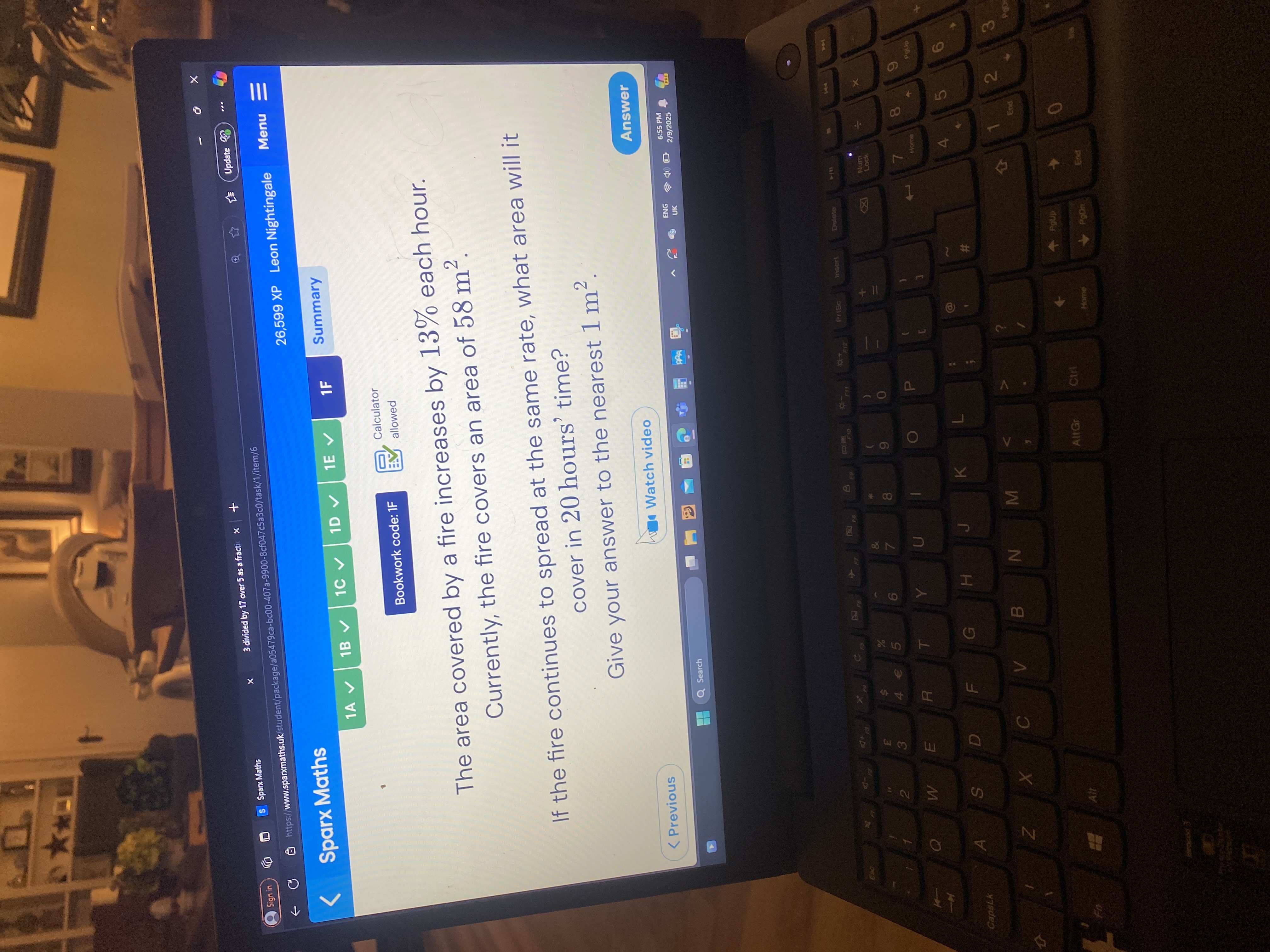The area covered by a fire increases by 13% each hour. Currently, the fire covers an area of 58 m². If the fire continues to spread at the same rate, what area will it cover in 20... The area covered by a fire increases by 13% each hour. Currently, the fire covers an area of 58 m². If the fire continues to spread at the same rate, what area will it cover in 20 hours' time? Give your answer to the nearest 1 m².

Understand the Problem
The problem asks us to calculate the area covered by a fire after 20 hours, knowing that the area it covers increases by 13% each hour, and the current area covered is 58 m². We will use the formula for exponential growth to find the area after 20 hours.
Answer
$559 \ m^2$
Answer for screen readers
$559 \ m^2$
Steps to Solve
-
Identify the initial area, growth rate, and time.
- Initial area: $58 \ m^2$
- Growth rate: 13% per hour, which means the area is multiplied by $1 + 0.13 = 1.13$ each hour.
- Time: 20 hours
-
Apply the exponential growth formula. The formula for exponential growth is: $A = A_0 (1 + r)^t$ where:
- $A$ is the final area
- $A_0$ is the initial area
- $r$ is the growth rate (as a decimal)
- $t$ is the time in hours
-
Substitute the values into the formula. $A = 58 (1.13)^{20}$
-
Calculate the area. $A = 58 \times (1.13)^{20} \approx 58 \times 9.64629 \approx 559.48482$
-
Round the answer to the nearest whole number. $A \approx 559 \ m^2$
$559 \ m^2$
More Information
The fire spreads considerably over 20 hours due to the compounding effect of exponential growth.
Tips
A common mistake is forgetting to convert the percentage increase into a decimal and adding it to 1. For example, using $58 \times (0.13)^{20}$ or $58 \times (13)^{20}$ would result in a completely wrong answer. Another common mistake is not rounding to the nearest whole number as the problem asks.
AI-generated content may contain errors. Please verify critical information